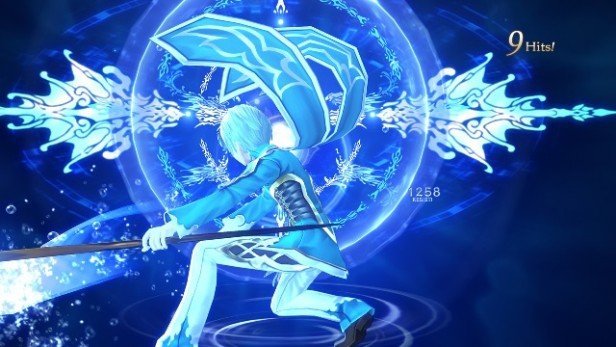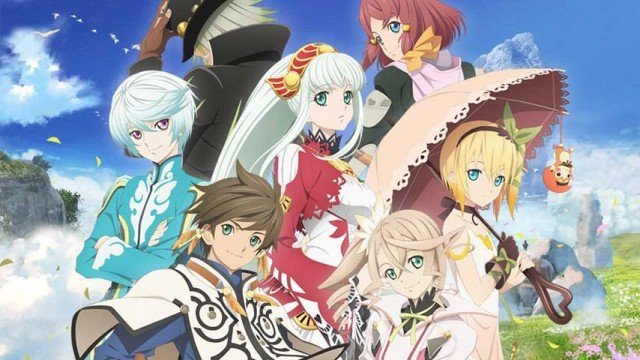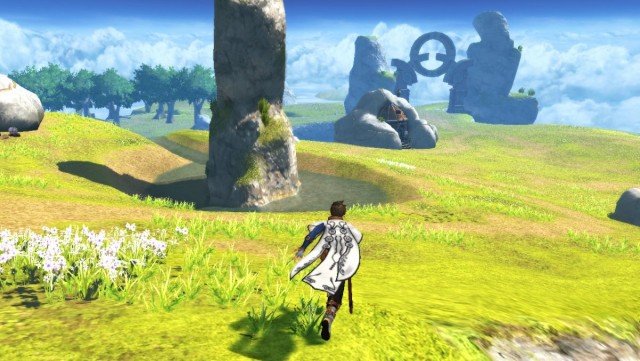Game Name: Tales of Zestiria
Platform(s): PS4
Publisher(s): Namco Bandai
Genre(s): JRPG
Release Date: 16.10.15
Price: £44.99
Reviewed on: PlayStation 4 (review copy courtesy of Namco Bandai)
Traditionally speaking, Japanese RPG’s seem to offer excellent value for money – for gamers – and a torrid time – for reviewers. Sometimes you’d strike it lucky; a fat dollop of Final Fantasy, Ni No Kuni and Golden Sun falling in your lap on Christmas day. Other times you’d be in for a real snorefest, a la Enchanted Arms, Blue Dragon and Infinite Undiscovery. There’s a lot of meat to a JRPG’s bones; where a modern first-person shooter can offer you a five-hour campaign and a repetitive multiplayer component, a JRPG can offer you a fifty-hour repetitive campaign – yet layer it with so many systems and subsystems that the whole thing suddenly becomes a mammoth adventure. While many JRPG franchises seem to have recently bit the dust, Namco Bandai’s Tales series has remained a stalwart in Western culture – lining game stores shelves (and occasionally bargain bins) since 1995. Twenty years later, we now arrive at Tales of Zestiria – a game which survived a brief stint on the PlayStation 3 before arriving swiftly on the PlayStation 4; the consoles’ first official next-gen JRPG. A proud moniker indeed, but does Zestiria deliver on its hype?
The game opens with a trope most successfully pulled off in the Golden Sun and Legend of Zelda series, whereby an underdog from a small village must leave his comfort zone and begin a quest for greater things. Our protagonist here is a young man named Sorey, whose unique childhood upbringing has gifted him the power to interact with an uncommon race called the Seraphim. The Seraphim are a powerful supernatural humanoid bunch that possess the ability to bring peace to a conflicted world. Sorey must become a Shepherd, a talisman for the Seraphim people – in order to restore harmony to their world and defeat an evil monstrous race called the Hellion. At least, that’s what I think is happening…
In all honesty Tales of Zestiria is right up there with Metal Gear Solid in terms of its cutscene length and dialogue heavy approach. At its core, I believe the narrative is fairly straightforward and accessible – yet it’s layered beneath so many plots and subplots that I struggle to conceive how children will be able to follow it coherently. With that said, here in the UK the game is rated a 16+ which significantly lowers its opportunities to sell well. While the graphics and audio seemed aimed towards the younger end of the spectrum (think Nintendo trademark family-friendly) its narrative occasionally deals with some heavy themes such as depression, murder and suicide. As these themes are often handled in a non-violent, semi-comical fashion – I feel the game accidentally falls into a grey area, whereby it’s too childish for adults and too adult for children.
A strong selling point of Tales of Zestiria is its real-time combat. This definitely needed to be tackled correctly considering the sheer amount of Hellion-busting that takes place throughout the lengthy campaign. Rather than utilizing a tried and tested turn-based format, developers Namco Bandai Studios have blended in real-time functionality so that Sorey can attack Hellion ghouls with various standard attacks and magical abilities with a few taps of the cross and circle buttons. This works well, if you choose your abilities properly you can effectively pin back large enemies – if you choose abilities they are invulnerable to then you will definitely have a harder time achieving that. These magical buffs are fancifully known as ‘artes’ and vary in strength and effectiveness. Some artes require more time for your gauge to fill but are stronger once unleashed; others are quick and easy and can coast you through early parts of the game quite safely. Slow and deadly or fast and aggressive – the choice is yours once you start developing a huge list of artes to play with.
Sorey’s link to the Seraphim also comes in handy; for a large portion of the game allies such as Mikleo can join Sorey and his partner Alisha as they quest through waves of vicious enemies – each assisting with their own unique attacks and abilities. Later on, Sorey is able to fully harness the power of the Seraphim – enabling the player to access a variety of colorful ice, fire and earth attacks, each with devastating effects. This results in keeping the game fairly fresh in the face of potential repetitiveness, using outrageous attacks on different enemies feels well crafted and satisfying and is definitely my favorite area of the game.
As I mentioned before, the game adopts that Nintendo-like family-friendly tone with its graphical approach; cel-shaded environments and characters playing rather young in this universe of monsters and destruction. Major cut scenes are handled tastefully with hand drawn animation and these look absolutely stunning, peaking gamer interest just at the right moments when combat is becoming too frequent. Generally though the graphics offer very little in terms of originality and while they do look good in full HD on the PlayStation 4, they lack the imagination and immersiveness of recent Grade A titles.

Overall Tales of Zestiria is a fun and welcome addition to the PlayStation 4 canon. It’s a genre that hasn’t had much attention in the past year or so, and while big blockbuster titles like The Witcher 3 can steal focus – there’s still a market for games such as these. I thoroughly enjoyed the combat, some of the script and some of the animation – however there are little areas of refinement that Namco still need to tune up if they’re to ever make a 10/10 title.
For me, the game felt a little young in its aesthetic to really deal with some of its dark themes effectively. I know this is part and parcel of the JRPG formula, however when I came across a section involving attempted suicide – I felt a darker, more adult game would have had me feeling emotions properly. Still, it’s a nice addition to the PS4 catalogue and one well worth a look at if JRPG’s are your bag.
-
Graphics - 7/107/10
-
Sound - 5/105/10
-
Gameplay - 7.5/107.5/10
-
Replay value - 7.5/107.5/10



